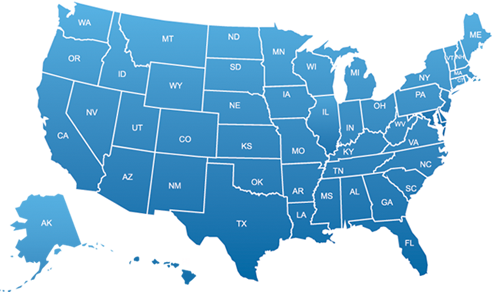DUI DWI DRUNK DRIVING IMPAIRED DRIVING IN CONNECTICUT
Incidence of Impaired Driving
For one of every 120 miles driven in Connecticut in 1998, a person with a blood alcohol concentration (BAC) >.10 sat behind the wheel. Police in Connecticut reported 1,951 crashes involving a driver or pedestrian with a BAC of .01 or more. Formulas developed by NHTSA were used to estimate the number of alcohol-related crashes where alcohol involvement was not reported by the police. An estimated total of 12,800 crashes in Connecticut involved alcohol which killed 142 and injured an estimated 4,300 people.
Impaired Driving by Blood Alcohol Concentration (BAC)
In 1998, Connecticut drivers with:
· BACs of .10 and above were involved in an estimated 12,200 crashes that killed 112 and injured 3,700
· BACs between .08-.09 were involved in an estimated 200 crashes that killed 9 and injured 200
· Positive BACs below .08 were involved in an estimated 400 crashes that killed 21 and injured 400
Costs
Alcohol is a factor in 14% of Connecticut’s crash costs. Alcohol-related crashes in Connecticut cost the public an estimated $1.1 billion in 1998, including $0.5 billion in monetary costs and almost $0.6 billion in quality of life losses. (For definitions of the cost categories, see the definitions fact sheet.) Alcohol-related crashes are deadlier and more serious than other crashes. People other than the drinking driver paid $0.6 billion of the alcohol-related crash bill.
Costs per Alcohol-Related Injury
The average alcohol-related fatality in Connecticut costs $4.1 million:
· $1.3 million in monetary costs
· $2.8 million in quality of life losses
The estimated cost per injured survivor of an alcohol-related crash averaged $126,000:
· $65,000 in monetary costs
· $61,000 in quality of life losses
Costs per Mile Driven
Crash costs in Connecticut averaged:
· $6.80 per mile driven at BACs of .10 and above
· $3.00 per mile driven at BACs between .08-.09
· $0.10 per mile driven at BACs of .00
Costs per Drink
The societal costs of alcohol-related crashes in Connecticut averaged $0.70 per drink consumed. People other than the drinking driver paid $0.40 per drink.
Impact on Auto Insurance Rates
Alcohol-related crashes accounted for an estimated 14% of Connecticut’s auto insurance payments. Reducing alcohol-related crashes by 10% would save $20 million in claims payments and loss adjustment expenses.
Prevention Savings of Impaired Driving Measures
Connecticut already has many important impaired driving laws. They are saving money and lives. The estimates that follow describe the expected costs and savings, given Connecticut’s prices and impaired driving rates. The estimates assume Connecticut’s laws achieve average U.S. effectiveness levels.
Administrative License Revocation: Laws that allow police or driver licensing authorities to revoke a driver’s license swiftly and automatically for refusing or failing a BAC test have reduced alcohol-related fatalities by 6.5% on average and saved an estimated $81,500 per driver sanctioned. The value of the driver’s lost mobility is the large majority of the estimated $4,100 cost per driver sanctioned. Reinstatement fees assessed to offenders typically cover start-up and operating costs.
Zero Tolerance Law: Laws like Connecticut’s that make it illegal for persons under 21 to drive with a positive BAC have reduced impaired-driving fatalities by 4% on average. Per licensed youth driver, these laws cost approximately $50 and yield net savings of $1,100. Medical care cost savings alone exceed the intervention cost. The primary cost is the value of mobility lost by youth who are forced to reduce their drinking or driving.
.08 BAC Law: A well-publicized State law lowering driver BAC limits to .08 can potentially reduce alcohol-related fatalities by an average of 7%. On average, Connecticut’s .08 law saves an estimated $62 per licensed driver. The value of mobility losses and alcohol sales reductions resulting from the law are the large majority of the estimated $4.40 cost per licensed driver.
Minimum Legal Drinking Age (MLDA): To reduce alcohol-related fatal crashes among youth, Connecticut has adopted a MLDA of 21. It saves an estimated $800 per youthful driver. The loss of liquor sales is the large majority of the $250 cost per youthful driver.
Potential Savings from Further Prevention Efforts
A number of additional strategies can mitigate the harm from impaired driving. The following paragraphs estimate the potential savings, in Connecticut’s prices, if other proven impaired driving prevention measures were widely implemented in Connecticut.
Intensive Sobriety Checkpoint Program: Intensive enforcement of Connecticut State BAC limits with highly visible sobriety checkpoints would reduce alcohol-related fatalities by at least 15% and save approximately $94,200 per checkpoint. Including police resources, costs of travel delay and the value of mobility losses by impaired drivers apprehended and sanctioned, the costs of conducting a checkpoint average about $13,400.
Graduated Licensing: Graduated licensing is a three-stage program that involves a learner’s permit, intermediate (provisional) license, and full licensure. To advance between stages, young drivers are required to demonstrate responsible driving behavior. Graduated licensing with a midnight curfew could reduce youth fatalities by at least 5% and total alcohol-related fatalities by 2%. If implemented, savings could amount to an estimated $800 per youthful driver in Connecticut. The value of the mobility lost by youth would be a large portion of the estimated $100 cost per youthful driver.
Enforcing Serving Intoxicated Patrons Law: Using undercover police officers to enforce the State law against serving alcohol to intoxicated bar and restaurant patrons would reduce alcohol-related crash fatalities by an estimated 11%. It would cost an estimated $0.50 per licensed driver and save about $30 per licensed driver.
Server Training: Server training programs provide education and training to servers of alcoholic beverages with the goal of altering their serving practices to prevent patron intoxication and alcohol-impaired driving. Generally, 40% to 60% of intoxicated patrons drive after consuming alcohol in bars, clubs or restaurants. A statewide, full-day, mandatory, face-to-face server training program with active management support has the potential to reduce nighttime DUI injury crashes by 17%. Implementing such a program costs an estimated $100 per licensed driver and saves about $300 in crash costs per licensed driver.
Interventions Targeting Repeat Offenders
Not many repeat offenders are deterred by broad impaired driving laws. Four alternative sanctioning approaches have proven especially effective at reducing repeat offenses.
Automobile Impoundment: Impounding vehicles after conviction for DUI or driving while suspended can decrease recidivism by an estimated 38% and DUI crashes by about 4%. Overall, per vehicle impounded, enforcement of this law would cost Connecticut approximately $1,200 and save on average $6,200.
Ignition Interlock: Breathtesting ignition interlocks are designed to prevent anyone with a positive BAC from starting or driving a car. Attaching an interlock to a car for a year after its operator is convicted of driving while intoxicated would reduce recidivism by an estimated 75% and alcohol-related fatalities by 7%. It would save almost $12,000 per vehicle equipped. Including equipment and case management costs, interlock costs would total approximately $1,440 per vehicle.
Electronically Monitored House Arrest: Electronic monitoring is an alternative to incarcerating repeat offenders. It provides assurance of an offender’s presence within an assigned area. Monitoring programs attach a device to the wrist or ankle that relays a continuous signal to a computer and also may require offenders to relay a breath test when prompted by a random phone call. Implementation of this program could decrease recidivism by an estimated 31%, causing DUI crashes to decrease by about 3% in Connecticut. Per person arrested, the program would cost nearly $2,100 and could avoid an estimated $7,900 in crash costs and almost $2,700 in incarceration costs.
Intensive Probation Supervision with Treatment: Intensive probation supervision with treatment is an alternative to incarcerating repeat offenders. This early intervention program seeks to reduce alcohol-impaired driving by addressing repeat offenders’ drinking habits and provides intensive individual counseling and monitoring. Implementation of this program in Connecticut could decrease recidivism by an estimated 50%, causing DUI crashes to decrease by 4%. Typically, per person arrested, this program costs approximately $1,800 and can avoid an estimated $8,800 in crash costs and $800 in incarceration costs.
Prevention Savings of Occupant Protection Measures
Along with impaired driving interventions, a number of important occupant protection strategies reduce impaired driving and other highway injuries.
Primary Safety Belt Law: Connecticut’s primary safety belt law allows law enforcement to stop and ticket a driver for nonuse of a safety belt without requiring the driver to be cited for or have committed another offense. Unbelted occupants account for 79% of impaired driving fatalities in Connecticut. Savings amount to an estimated $7,000 per new belt user. If enforced with frequent belt-use checkpoints, the value of temporary discomfort experienced by some new belt wearers and travel delay costs at checkpoints are the large majority of the law’s estimated $420 cost per new belt user.
Child Safety Seat Law: Infants and children who are seated in places other than the back seat account for nearly 45% of child fatalities in Connecticut, and those seated in the back seat without proper restraints account for an additional 36% of child fatalities. Drinking drivers are more likely than other drivers to transport children improperly. Traveling in a child seat reduces the chance of a crash death by an estimated 71% for infants and 54% for children aged 1-4. Child safety seat laws like Connecticut’s typically reduce occupant fatalities of children age 4 and under by approximately 15% and their alcohol-involved deaths by an estimated 41%. The average child seat costs approximately $45 but avoids nearly $2,500 in injury costs.
Motorcycle Helmet Use Law: Statewide, 14% of alcohol-related crash fatalities are motorcyclists; 85% of these motorcyclists were unhelmeted. A motorcycle helmet law that covers all riders in Connecticut could save lives and prevent devastating and debilitating head injuries. Wearing a motorcycle helmet reduces a rider’s risk of death by 29% and nonfatal injury risk by 15%. On average, helmets cost about $330 in Connecticut and prevent nearly $5,500 in injury costs.
The estimates reported here were produced under National Highway Traffic Safety Administration Contract DTNH22-98-D-35079, Task Order 7.
Contact Information:
Pacific Institute for Research and Evaluation (PIRE)
11710 Beltsville Drive, Suite 300
Calverton, Maryland 20705-3102
301-755-2700



